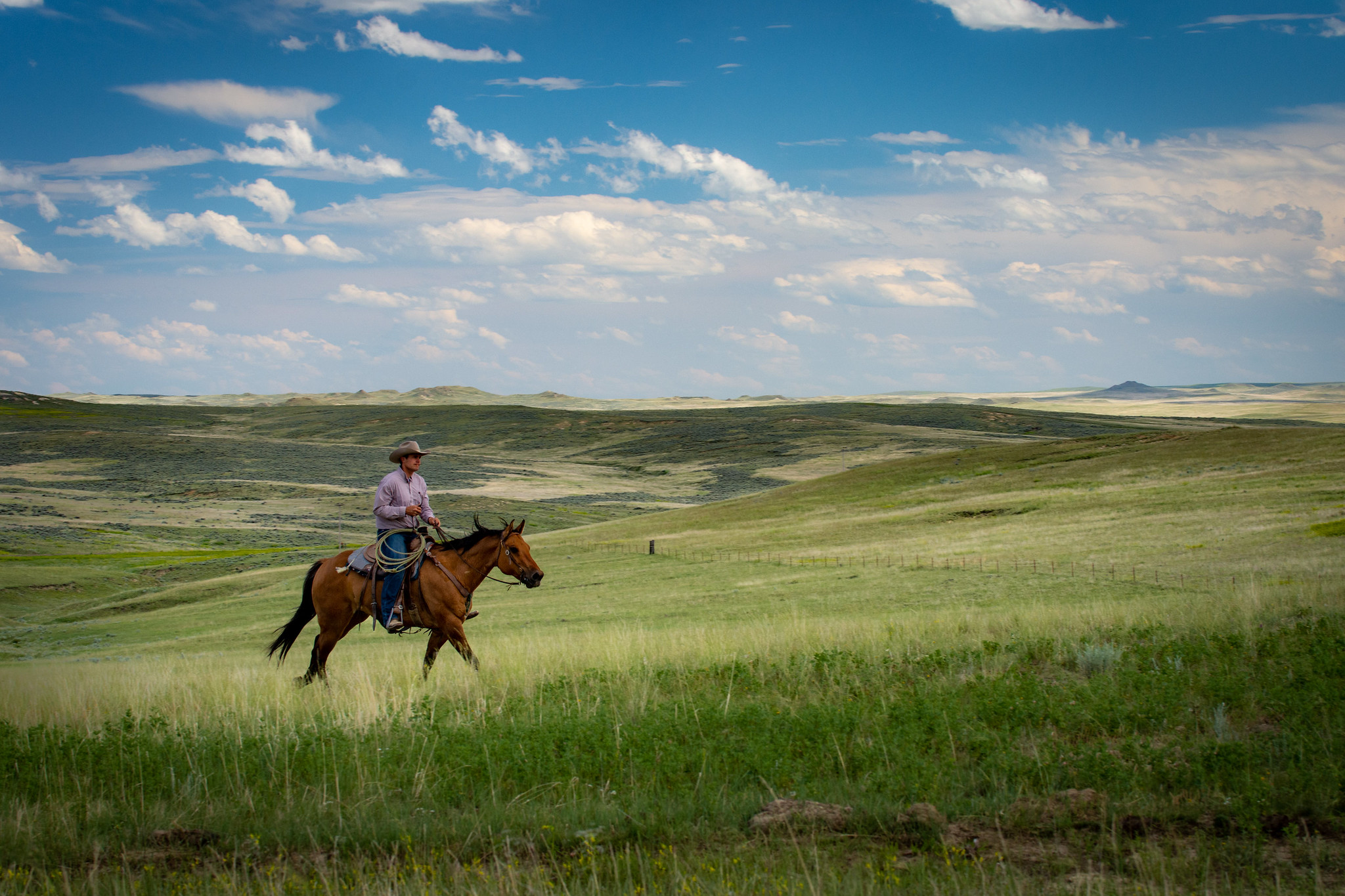Grazing Lands
 The impacts of climate change on grazing lands and the livestock operations that depend on them will vary by region, type of grazing land, vegetation community, and the type of livestock. These impacts are superimposed upon other factors such as land ownership, historical and current management, demographic changes and access to USDA programs.
The impacts of climate change on grazing lands and the livestock operations that depend on them will vary by region, type of grazing land, vegetation community, and the type of livestock. These impacts are superimposed upon other factors such as land ownership, historical and current management, demographic changes and access to USDA programs.
Rangelands cover an area of 405.8 million acres or 21% of the U.S. surface area. In the Western states, rangelands are predominantly Federally-owned lands, whereas over the Great Plains, rangelands are privately-owned. Pasturelands are also privately owned and cover 121.1 million acres (6% of the U.S. surface area); pasturelands are more common in the wetter half of the US, to the east of the 97th meridian. Rangelands and pasturelands are both used for grazing but the difference between the two is that rangelands support natural (and usually native) ecosystems while pasturelands are highly managed, cultivated systems.
Continue to the full text Grazing Lands in a Changing Climate or browse related content:
-
Drought Vulnerability Assessment to Inform Grazing Practices on Rangelands
The USDA Southwest Climate Hub and Natural Resources Conservation Service (NRCS) worked together to produce two drought…
-
Climate Vulnerability Assessment of California Rangelands
A new resource for California ranchers and resource managers to help increase rancher and rangeland resilience to…
-
Flexible Stocking Summit Report: A Peer-to-Peer Discussion and Learning Event
09/19/17 Flexible Stocking Summit Report
The Flexible Stocking Summit brought ranchers together from…
-
Adapting for the Future
Researchers in the Northern Plains have been studying how changes in the atmosphere might impact rangelands throughout…
-
SARE Resource: Cultivating Climate Resilience on Farms and Ranches
Cultivating Climate Resilience on Farms and Ranches outlines the new challenges that changing weather patterns pose in…
-
Drought and Rangelands: Effects and Management Responses
Droughts can result in reduced growth rates, defoliation, and increased stress on vegetation, with accompanying…
-
Weather and Climate Considerations for Dairy
How does the changing climate impact dairy operations, and what can dairy farmers do to adapt?
-
Managing Grazing to Improve Climate Resilience
A rotational stocking system controls the timing and intensity of grazing by rotating animals among paddocks. This…
-
Agroforestry: Enhancing resiliency in U.S. agricultural landscapes under changing conditions
This report provides a science-based assessment of adaptation and mitigation mechanisms that agroforestry can confer,…










